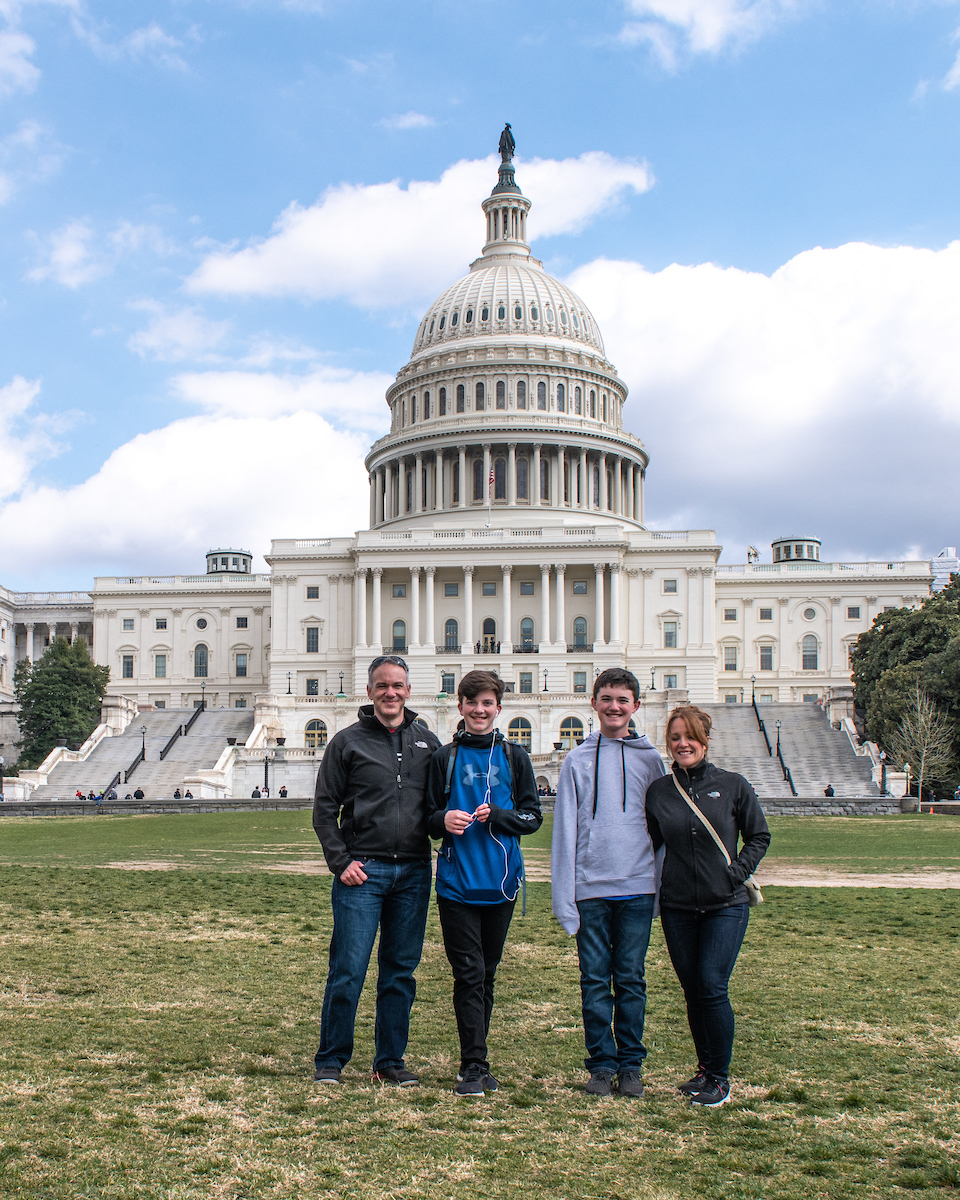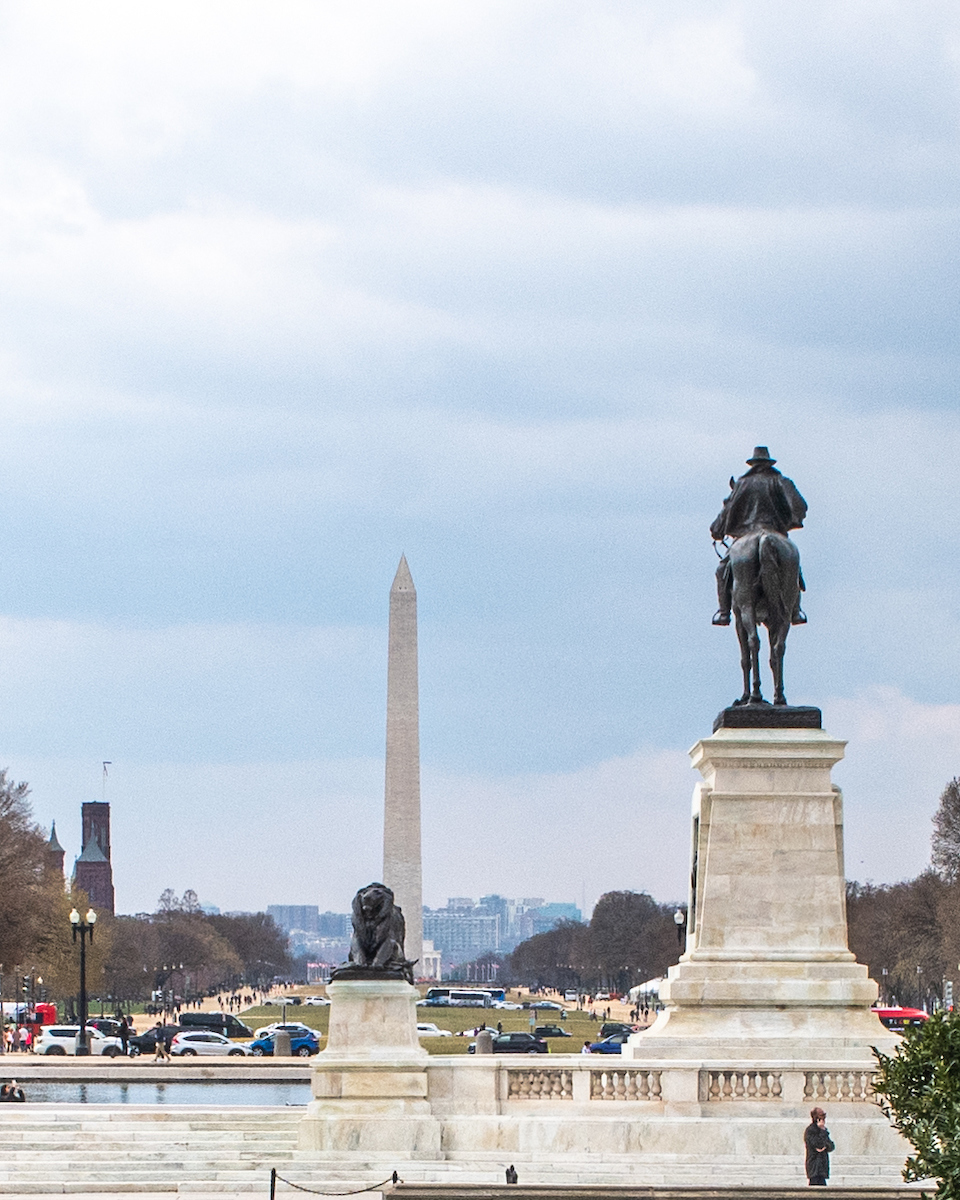Washington D.C. (Day 2): Library of Congress, National Air & Space Museum, & US Capital
- That's How We Travel

- Dec 30, 2021
- 4 min read
Updated: Jun 5
Summary: Our second full day in Washington DC featured two timed entry tours scheduled with our local Congressman. If you are a US Citizen, you can find your US Representative here. Sign up for timed tours at the Library of Congress and US Capital to not only avoid crowds, but also to enjoy a guided tour. Between tours we visited the Smithsonian's National Air & Space Museum. Pack a lunch to-go and an enjoy an entirely cost-free day. This blog post is part of 6-part series related to our time in Washington D.C.
What You Should Bring. We packed sandwiches, a ton of snacks, and lots of water so we wouldn't be caught trying to find a place to eat. Park benches on the National Mall made for a convenient picnic spot. During our Spring Break/March trip to Washington D.C., the temperatures were still freezing at night with a fairly cold wind during the day. We packed extra layers and scarves to stay warm.
Getting there. We left our Air BnB in time to arrive at the Library of Congress for a 9:45 a.m. tour via an Uber. There is also public transportation available.
About the Library of Congress. Established in the year 1800, the Library of Congress is the largest library in the world with over 170 million items. The Library houses both domestic and international collections, with 470 languages represented in the collections. The primary purpose of the Library is to serve as the research arm of Congress which is known as the Congressional Research Service. One of three legislative entities that serves Congress, the Congressional Research Service employs over 600 employees and has an annual budget of over $100M. The Library of Congress also contains the U.S. Copyright Office, which maintains the official registration of all U.S. Copyrights. It also reviews applications and makes determinations of whether the applicant may be officially registered.
Visiting the Library of Congress. The Library itself consists of three buildings on Capital Hill, namely, the Jefferson Building (est. 1897), the John Adams Building (est. 1938) and the James Madison Memorial Building (est. 1981). The Jefferson Building is open to the public. Timed entries are currently required and we recommend scheduling a tour with your local Congressman. Some of the more famous collections include a 15th Century Gutenberg Bible (one of the first mass-produced books) and the Presidential Papers collections, which includes papers from 23 former Presidents. Notable exhibits also include original drafts of Abraham Lincoln's Gettysburg Address. Fun fact: If you're a credentialed researcher, you may reserve a reading room at the Library.
Smithsonian's Air and Space Museum, Washington D.C. location. Established in 1946, the Smithsonian Institute's Air and Space Museum is a popular stop when visiting Washington D.C. As a kid, we came here back when our school's civics class took a trip to D.C. As adults, our family stopped here between timed entries to the Library of Congress and the U.S. Capital. Located on the National Mall between the U.S. Capital and the Smithsonian Castle, entry is free, just like all of the Smithsonian museums.
Exhibits. Some highlights of this museum include:
- The Apollo 11 Command Module, which carried Neil Armstrong to the moon and back.
- The Wright Brother's 1903 Airplane or "Flyer."
- Amelia Earhart's Lockheed Vega 5B.
- The Mercury Friendship 7 which carried the first American to orbit the Earth.
US Capital. The last part of our day ended with our timed entry and tour of the U.S. Capital. This iconic building not only is widely-recognized as a symbol of American democracy, it quite literally functions as one of the central legs of the American Democratic government. A tour of this facility will bring you through both legislative chambers, with the House of Representatives on the south wing and the Senate in the north.
Originally built in 1800, the Capital building survived a fire in 1814 when it was partially burned by the British in the War of 1812. Later, in 1850, the building was expanded, including the installation of it's famous dome. The Capital's 580,000 square foot Visitor's Center is located entirely underground so as to not detract from the building's neoclassical look.
American Democracy. It is hard not to pass through the halls of the US Capital and not feel respect and awe for those that call this building their place of work. Within these walls, generations of men and women have come together with differing views on what our Country needs, "to form a more perfect union." The chambers themselves are designed for speech and debate, understanding that diverse opinions create lead to better outcomes for all. Like many travel experiences, physically walking the halls of the US Capital provides a prospective that simply cannot be experienced on TV or online. We highly recommend taking an official tour of this American historical and cultural landmark.













































Comments